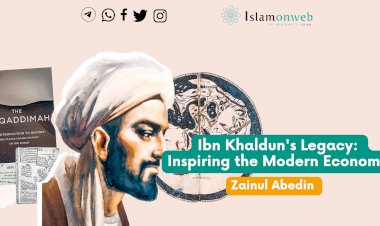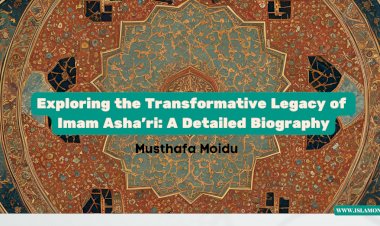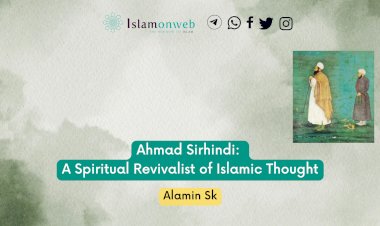Ibn Battuta: Explorer of the Marvels of Travelling
A Moroccan Muslim scholar and explorer, Abu Abdullah Muhammad Ibn Battuta was well renowned for his travels and his expeditions, which he named the Rihla. His travels crossed approximately thirty years and practically the entirety of the Islamic world as it is known today. They covered a wider area, extending from North Africa, West Africa, Southern Europe, and Eastern Europe in the West to the Middle East, Indian subcontinent, Central Asia, Southeast Asia, and China in the East. After his journey, he returned to Morocco and told Ibn Juzayy about his experiences.
On February 24, 1304 C.E. (703 Hijra), Ibn Battuta was born in Tangier, Morocco, during the Marinid dynasty. He was known as Shams ad-Din. His family had a history of serving as judges and was of Berber descent. He decided to travel after having a degree in Islamic law. Ibn Battuta's desire to travel was sparked by a desire to locate the best professors and libraries, which at the time were in Alexandria, Cairo, and Damascus. He left his home in June 1325, when he was 21 years old and first embarked on a 16-month trek to Mecca as part of the Hajj. His initial goals were to perform his religious duty and to further his knowledge by studying under eminent academics in Egypt, Syria, and the Hejaz. Long lists of academics and Sufi saints he met, as well as a list of degrees bestowed upon him to serve in Damascus. Ibn Battuta travelled back to Morocco before the end of 1353. At the sultan's request, he dictated his memoirs to Ibn Juzayy, a writer who adorned Ibn Battuta's straightforward writing with an ornate manner and poetry stanzas. Before his passing, he is said to have served as the Qadi of a Moroccan village; He may have passed away in 1368 or 1377 and was buried at Tangier, where he was born.
Ibn Battuta started his travels in 1325 when he was 21 years old. His travelling went on for around 29 years, and he covered about 75,000 miles visiting 44 modern countries, which were then mostly under the governments of Muslim leaders. He started his journey by travelling through the Middle East. He then sailed to Mecca through the Red Sea. He entered Mecca in mid-October 1326. He journeyed to Iran and Iraq after crossing the vast Arabian Desert. Once more, in 1330, he travelled over the Red Sea to Aden and then Tanzania.
In Alexandria, Ibn Battuta spent three days as a guest of a locally venerated Sufi ascetic named Burhan al-Din the Lame. This holy man saw that Ibn Battuta had a passion for travel. He suggested that Ibn Battuta visit three other fellow Sufis, two in India and one in China. Of the encounter with Burhan al-Din, Ibn Battuta wrote in his Travels. Then he visited another saint who lived quite near Alexandria. There he had a dream where a bird carried him Eastward and dropped him there. The saint interpreted his dream that he would be in India for a long period, supporting what Burhan al-Din had said. In 1326, he crossed the Arabian Desert to Iraq, southern Iran, Azerbaijan, and Baghdad.
In Damascus, Ibn Battuta boarded in one of the three madrasas. During his 24-day stay, he settled down into some formal studies. Damascus had the largest concentration of famous theologians and jurists in the Arab-speaking world. Then in return, the journey took him to southern Arabia, Oman, Hormuz, Southern Persia, and across the Persian Gulf back to Mecca. In 1332, when Ibn Battuta came, Mogadishu was at the height of its affluence. He called it "an exceptionally vast city" with many wealthy merchants, well known for its fine fabrics that were sent to other nations, especially Egypt. Battuta also stated that Abu Bakr ibn Shaikh 'Umar, a Somali Sultan, was in charge of the city. He then decided to go to India.
Ibn Battuta decided to look for work with Muhammad bin Tughluq, the Sultan of Delhi, after completing his third trip to Mecca. He left for the Seljuk-controlled region of Anatolia in the autumn of 1330 (or 1332) to travel by land to India. To get to the Nile valley, he travelled over the Red Sea and the Eastern Desert. From there, he continued north to Cairo. From there, he travelled north via some of the villages he had already visited in 1326 before crossing the Sinai Peninsula to Palestine. Ibn Battuta’s description of the Byzantine capital is brilliant and accurate.
After his return from Constantinople through the Russian steppes, he continued his journey in the general direction of India. He traveled with a caravan to Central Asia, visiting the ancient towns of Bukhara, Samarkand, and Balkh. At last, Ibn Battuta then fulfilled the predictions of the various Sufis he met by traveling to India through Khorasan and Afghanistan, where he had to cross the Hindu Kush Mountains, and he arrived at the boundaries of India on the Indus River in 1333.
Reference
- Waines, David. The Odyssey of Ibn Battuta: Uncommon Tales of a Medieval Adventurer. Chicago: University of Chicago Press, 2010.
- Arno, Joan and Helen Grady. Ibn Battuta: A View of the Fourteenth-Century World. Los Angeles: National Center for History in the Schools, University of California, Los Angeles, 1998.
- Tim Mackintosh Smith. The travel of Ibn Battuta: An Autobiography.
- Cynthia Stokes Brown. Ibn Batuta Muslim Traveling Judge. Khan Academy, https://www.khanacademy.org/humanities/big-history-project/expansion-interconnection/exploration-interconnection/a/ibn-battuta
- Ivan Hrbek, The editors of encyclopedia Britannica. Ibn Battuta: Muslim explorer and writer Feb 20, 2023 https://www.britannica.com/biography/Ibn-Battuta
About the author
Mohamed Thaha A is from Chennai, Tamil Nadu and is currently studying at Darul Huda Islamic University, NIICS, Kerala.
Disclaimer
The views expressed in this article are the author’s own and do not necessarily mirror Islamonweb’s editorial stance.

























Leave A Comment